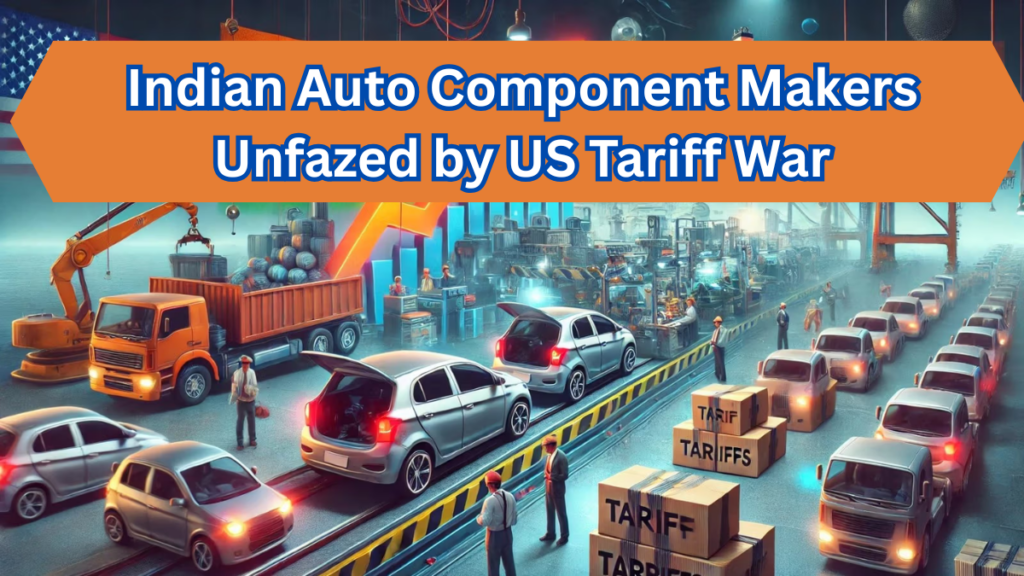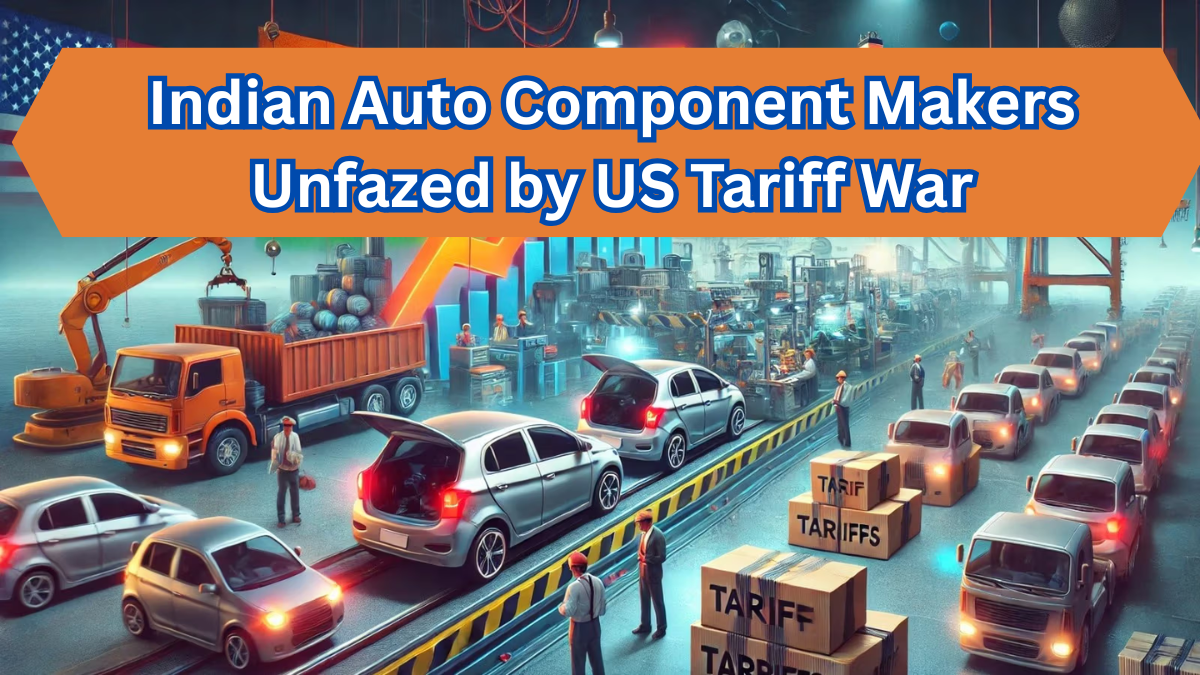The latest round of US tariffs announced by President Donald Trump is unlikely to significantly impact Indian auto component manufacturers with facilities in Canada and Mexico. Since these countries are exempt from additional duties under the newly announced ‘Liberation Day’ tariffs, Indian manufacturers operating there can breathe a sigh of relief.

Key Highlights of the New US Tariffs
- The ‘Liberation Day’ tariffs do not cover autos, auto parts, steel, or aluminum articles.
- Canada and Mexico are exempt due to an existing order under the International Emergency Economic Powers Act (IEEPA).
- US-Mexico-Canada Agreement (USMCA)-compliant goods will continue to enjoy zero duties.
- Non-compliant imports from other countries will face a 25% tariff.
- Tariffs on passenger vehicles begin April 3, 2025, while those on critical auto parts will be imposed no later than May 3, 2025.
Impact on Indian Auto Component Makers
Leading Indian auto component manufacturers, such as Samvardhana Motherson International Ltd, have stated that their business operations will remain largely unaffected. A significant portion of their exports to the US comply with USMCA regulations.
“A significant part of our products supplied to US customers are either manufactured in the US or USMCA-compliant. Hence, the executive orders are unlikely to materially impact our financials,” – Samvardhana Motherson International Ltd.
However, the company acknowledges that tariffs on imported components may be subject to modifications in the future.
India-US Auto Trade Overview
| Trade Aspect | Value in FY24 |
|---|---|
| Auto components exported to US | $6.79 billion |
| Auto components imported from US | $1.4 billion |
| Import duty on US auto components in India | 15% |
| India’s largest auto component exports | Engine parts, powertrains, transmissions |
According to Crisil Intelligence, imports from Canada and Mexico will remain tariff-free until a system is devised to impose tariffs only on non-US components.
Why India’s Auto Sector Will Feel Minimal Impact?
- Limited US Exports:
- The US accounts for 28% of India’s auto component exports.
- Of this, 84% consists of powertrain parts, transmissions, engines, and electrical components.
- Minimal Exposure:
- India’s total auto production exports only 15%.
- Exposure to the US market is a mere 4.2%.
- After considering tariff-affected components, the impact shrinks further to 3.5% of annual revenue.
- Competitive Pressure on Indian Manufacturers:
- Higher US prices could reduce competitiveness for Indian manufacturers.
- Mexico and Canada are better positioned to benefit due to their USMCA coverage, accounting for 46% of US auto imports.
Jaguar Land Rover & Royal Enfield: Potential Impact
- Jaguar Land Rover (JLR):
- 23% of JLR’s global sales (400,000+ units) occur in the US.
- Cars are exported from the UK, meaning new tariffs may affect profitability.
- Options for JLR:
- Absorb costs.
- Pass on the increase to customers (risking market share).
- Cut expenses.
- Establish a US manufacturing facility.
- Royal Enfield:
- Holds 8% of the US mid-size motorcycle market.
- Tariffs may slow down export growth.
- However, the Super Meteor 650 ($7,999) remains cheaper than the Harley-Davidson Iron 883 ($9,999), offering a price advantage.
A Silver Lining: Opportunity for Indian EV Makers
With rising US tariffs on traditional auto imports, Indian electric vehicle (EV) manufacturers have an opportunity to expand into the American market. Industry experts suggest that budget EVs from India could gain traction as an affordable alternative to pricier US-made models.
“With US automotive tariffs rising, India’s electric vehicle sector has a prime opportunity to capture a larger share of the US market, especially in the budget car segment.” – Saurabh Agarwal, EY Partner & Automotive Tax Leader
While China exported $17.99 billion worth of auto components to the US in 2023, India’s share was just $2.1 billion in 2024, indicating significant potential for growth.
Final Thoughts
Overall, while the latest US tariff measures create uncertainties in the global auto industry, their direct impact on Indian auto component makers remains minimal. Given India’s small share of auto exports to the US and the protection provided by USMCA exemptions for Canada and Mexico, Indian manufacturers are largely shielded. However, increased pricing pressures and shifting trade dynamics may push Indian automakers to explore new strategies, such as expanding EV production for the US market.
FAQs
-
Will Indian auto component makers face higher tariffs in the US?
- No, most Indian manufacturers with facilities in Canada and Mexico are exempt under USMCA. Non-compliant imports will face a 25% tariff.
-
Which Indian auto companies are most affected?
- Companies like Jaguar Land Rover (JLR) and Royal Enfield may face pricing challenges, but overall, Indian auto component makers will have minimal impact.
-
What are India’s main auto exports to the US?
- Engine components, powertrains, transmissions, and electricals account for 84% of all Indian auto component exports to the US.
-
Can Indian EV manufacturers benefit from US tariffs?
- Yes! With rising tariffs on traditional vehicles, Indian EV makers have a great opportunity to enter the US market, especially in the budget segment.
Pari is a passionate writer known for captivating stories that blend imagination and reality. Inspired by travel, history, and everyday moments, Pari crafts narratives that resonate deeply with readers.
